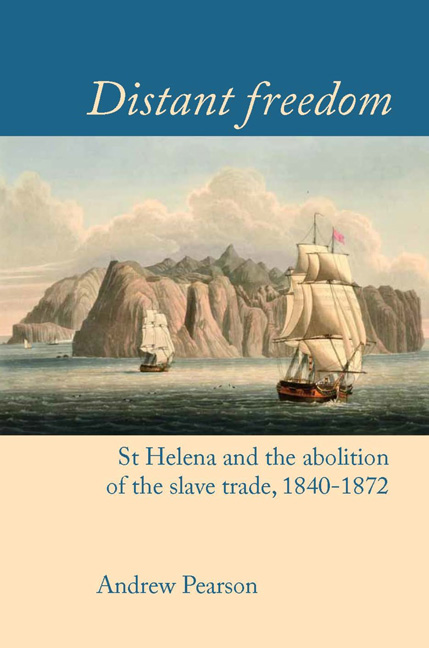Book contents
- Frontmatter
- Dedication
- Contents
- Figures
- Tables
- Acknowledgements
- Introduction
- Map
- 1 A Place of Immense Advantage
- 2 London and Jamestown
- 3 Sailortown
- 4 Life and Death in the Depots
- 5 ‘All, all, without avail’
- 6 After ‘Liberation’
- 7 Island Lives
- Conclusion
- Appendix 1 Liberated Africans Captured aboard Slave Ships: Cases Tried at Freetown, Luanda, Cape Town and St Helena, 1836–68
- Appendix 2 Prizes Adjudicated by the Vice-Admiralty Court of St Helena
- Appendix 3 Liberated African Emigration from St Helena
- Appendix 4 Emigrant Voyages from St Helena
- Bibliography
- Index
3 - Sailortown
- Frontmatter
- Dedication
- Contents
- Figures
- Tables
- Acknowledgements
- Introduction
- Map
- 1 A Place of Immense Advantage
- 2 London and Jamestown
- 3 Sailortown
- 4 Life and Death in the Depots
- 5 ‘All, all, without avail’
- 6 After ‘Liberation’
- 7 Island Lives
- Conclusion
- Appendix 1 Liberated Africans Captured aboard Slave Ships: Cases Tried at Freetown, Luanda, Cape Town and St Helena, 1836–68
- Appendix 2 Prizes Adjudicated by the Vice-Admiralty Court of St Helena
- Appendix 3 Liberated African Emigration from St Helena
- Appendix 4 Emigrant Voyages from St Helena
- Bibliography
- Index
Summary
In August 1866, on board his flagship Bristol, Geoffrey Phipps Hornby, Commodore of the West Africa Squadron, composed a lengthy communiqué to the Lords Commissioners of the Admiralty. Entitled Comparative advantages of St Helena and Ascension as places for a principal naval depot on the West Coast of Africa Station, it extolled the virtues of the former of these two islands as a military base and hospital, and made the case for its future use. With hindsight, it was a wasted effort. The Cuban slave trade was all but extinct and only two more slave ships would ever be adjudicated at St Helena, the last in 1868. Within four years, the West Africa Squadron – its work accomplished – would be subsumed into the Cape Station and proposals for St Helena to assume a wider strategic role were quietly dropped. Phipps Hornby's letter nevertheless holds considerable interest, as it revisited arguments that had been made time and again over the past quarter century. The Admiralty had long maintained that St Helena was an indispensable asset, and persisted in this opinion even in the dying years of the atlantic slave trade and in the era of the steam warship.
Anti-slavery in the South Atlantic
St Helena's involvement in the suppression of the slave trade ultimately hinged not on political considerations, but on its relationship with the natural circulation of winds and currents (Figure 7). The Atlantic comprises two systems, the first of which, to the north of the equator, operates in a clockwise direction. South of the equator, sailing is dictated by the Benguela Current, which flows northwards up the coast of Africa, where it joins the South Equatorial Current (heading towards the Caribbean) and the Brazil Current (which flows south around the coast of Brazil and Argentina). These currents combine with the prevailing south-east trade winds and westerlies to create a system in which the natural sailing routes follow an anti-clockwise direction. Further to the south are the Roaring Forties – strong westerly winds that circulate around the globe at latitudes of approximately 40 to 50 degrees south.
This system provided the framework for navigation in the South Atlantic throughout the Age of Sail.
- Type
- Chapter
- Information
- Distant FreedomSt Helena and the Abolition of the Slave Trade, 1840–1872, pp. 75 - 105Publisher: Liverpool University PressPrint publication year: 2016



